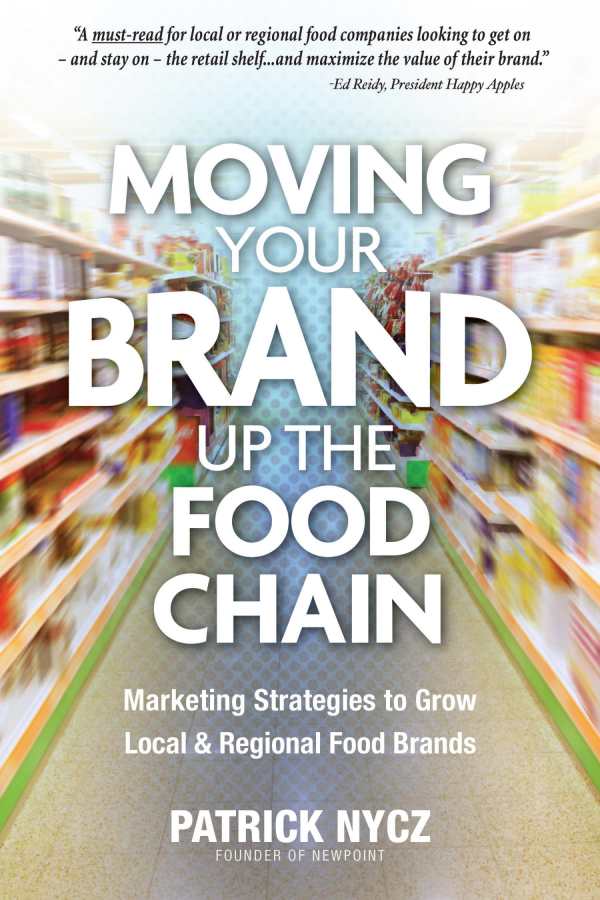
Moving Your Brand Up the Food Chain
Marketing Strategies to Grow Local & Regional Food Brands
Moving Your Brand Up the Food Chain is a treasure trove of marketing intelligence and advice.
Moving Your Brand Up the Food Chain by Patrick Nycz is an excellent, comprehensive marketing handbook for any local or regional food brand.
There are certain basic marketing principles that can be applied to any consumer brand, but navigating the ins and outs of the food industry is what makes Moving Your Brand Up the Food Chain stand out. With decades of consumer packaged goods (CPG) experience and now running NewPoint, a marketing firm focused on the food industry, Nycz could not be better positioned to write this book. It could easily have turned into a straight sales pitch for his company, but instead, Nycz uses intelligence he has gained working in the industry and willingly shares a wealth of knowledge that smaller food brand marketers can apply to their own business challenges.
The book is well organized into five sections: Why Now for Local and Regional Food Brands, Brand Reconnaissance, Brand Advantage Strategies, Brand Growth Programs, and Brand Prosperity and Long-Term Growth. Just by the very titles of these sections, it is obvious that the content emphasizes the importance of marketing the brand. This could not be more appropriate, given the highly competitive nature of both the traditional grocery store and online stores. Simply getting noticed on shelves or on a web page is a major hurdle, never mind influencing product trial. Each of the book’s sections clearly and carefully lays out marketing strategies and tactics designed to take on this daunting challenge.
Very tailored to food brands, the chapters are detailed without being overwhelming. The author makes no assumptions about the reader’s level of expertise; the content is just as informative for experienced as for novice food marketers. Topics include planning and research, brand identity and brand campaigns, brand management, sound advice about public relations (especially crisis management), and strategic product development.
The book is particularly strong in its strategic approach to food branding. For example, Nycz generously showcases his own agency’s unique “Brand Affinity Matrix” and explains its use as a tool to gauge the effectiveness of a brand message. While this matrix is best applied by experienced marketers, it demonstrates the kind of analytical thinking that must go into sophisticated marketing programs.
Other parts of the book are strategically relevant as well. Section Three offers a fine overview of brand positioning and brand messaging. The chapter in this section concerning packaging is critically important because “an estimated 70 percent of all purchasing decisions are made at the retail shelf.” Key topics in this chapter, such as packaging and food safety, nutrition labels, and “clean labeling,” should be of keen interest to food brand marketers. Pertinent case studies about product packaging are also included. Quotes from pundits and industry retailers are sprinkled throughout the book.
For the food brand marketer, Moving Your Brand Up the Food Chain is sure to be a treasure trove of marketing intelligence and advice.
Reviewed by
Barry Silverstein
Disclosure: This article is not an endorsement, but a review. The publisher of this book provided free copies of the book and paid a small fee to have their book reviewed by a professional reviewer. Foreword Reviews and Clarion Reviews make no guarantee that the publisher will receive a positive review. Foreword Magazine, Inc. is disclosing this in accordance with the Federal Trade Commission’s 16 CFR, Part 255.
